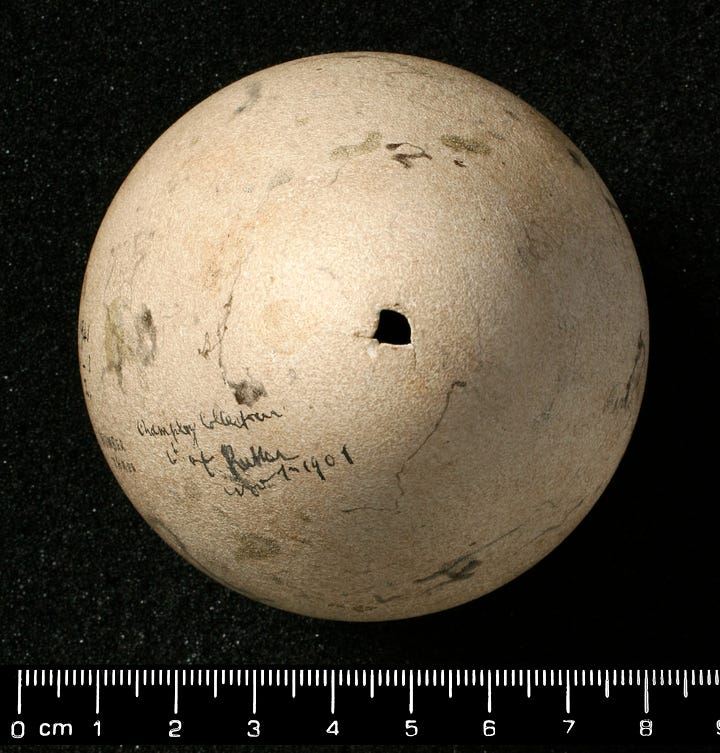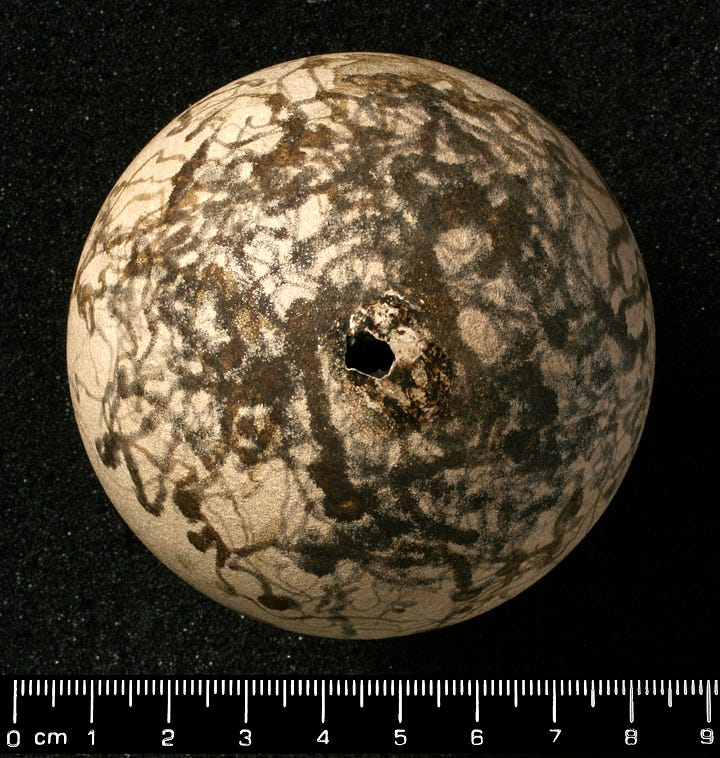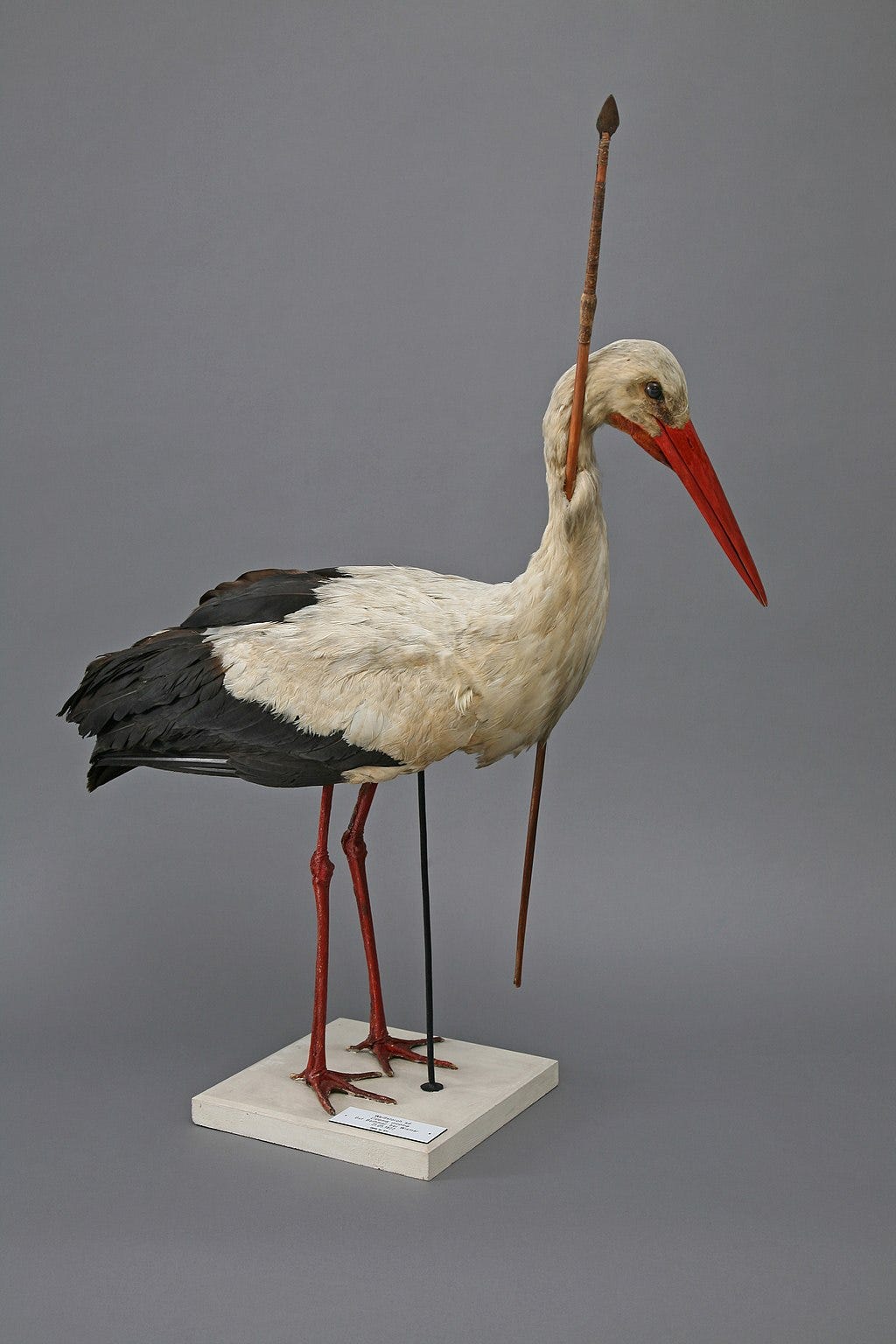Pfeilstorch: How an Arrow Lodged in a Stork's Neck Taught us Migration
I went to see the new temporary exhibition "Birds: Brilliant and Bizarre" at the Natural History Museum in London.
Couched in a cluster of blooms shivering like old teabags in the wind, a glossy red leg rises arrogantly and seats itself in a tuft of thick black feathers. The dawn sky is a scratchy periwinkle, still tinged with wet copper. The dark eye, like a marble dipped in tar, sits in a sea of white, unblinking. A wooden spear pierces the scene and body alike, and sits there for 200 years. We discovered migration through a pierced stork which arrived in Germany in 1822. It carried an artefact from central Africa embedded in its neck, so we named it Pfeilstorch. Before Pfeilstorch we thought that birds turned into mice during the winter, or slept underwater. Now we began to think they might fly halfway across the world, riding on air over oceans and deserts for months at a time. Pfeilstorch had done this with a finely crafted piece of African wood buried just to the left of his trachea. I wonder if the spear got hot in the spring sun.
I learn a lot from the exhibition. For instance, that Australian Zebra Finches use fast, high-pitched ‘heat calls’ to warn their unhatched young of rising temperatures. This song programmes cells in the developing chicks to produce less heat, and allows them to handle extreme temperatures more easily once hatched. I also learn that Jackdaws take acid baths in ant colonies, disturbing them to trigger the defence strategy which sprays them with formic acid, killing off microorganisms in their feathers and keeping them healthy. Further along, I spot a display with a chunk of honeycomb in it. It describes an incredible symbiotic relationship between the aptly named Honeyguide birds and Hadza hunter-gatherers. Honeyguides learn to recognise the calls and whistles of the Hadza group and call back, guiding the gatherers to the bee’s nest. The birds are rewarded by the human honey harvesters with wax and larvae from the hive.
It’s dark and it smells like carpet and chip board. I walk around touching anything which lies on a bed of red paint. This is the visual code the NHM has used to let me know I can rub my grubby little hands on different parts of birds. There’s interactive games where you can play at being a blue jay hiding his acorns for the winter and tall fabric banners with starling murmurations projected over the top - you press a big yellow button and a virtual kite attacks them. I wonder if this system counts as a cybernetic loop. I lay my palm tenderly atop a kiwi’s beak. I trace the gentle curve of the nests of white swifts, which are harvested by humans to make bird’s nest soup. Often, the nests are harvested before the chicks that live in them have fledged. They’re built to stick to cave walls. It must be a shattering journey out of the mouth of the dark cave into the blazing light. Further down the corridor, inside a glass prism, a tiny jewel breasted creature beats his wings indignantly. I place my hand on a rubber circle and feel his fluctuating digital heartbeat. It feels intimate, his mechanised pulse pounding underneath my palm, and I realise it’s probably the closest I’ll ever be to a bird of paradise.
30 minutes in, I find myself face to face with a horde of plastic debris. It looks dirty behind glass, unworthy of its glimmering case: mangled, uncomfortable, sharp, twisted, scuffed, and thoroughly unappetising. To the juvenile flesh-footed shearwaters who live on Lord Howe Island in Australia, this debris is dinner. With stomachs filled with plastic instead of food, the chicks become malnourished, often dying before they can take flight. In the case nearby, there’s an oxygen resuscitator on display. The lead white mouth of the bottle clasps a copper valve which feeds into a stern metal box. Steel screws line a small window which gives way to a minuscule wooden perch. It’s a contraption for reviving canaries taken down mineshafts. I imagine the tiny yellow bird singing to the point of exhaustion, being placed in a steel cube and pumped full of oxygen to revive it and get ready for another go.
From the start, birds are branded by the exhibition texts as ‘great survivors’ - unfortunately, these great survivors are more fragile than they might seem, and this fact is made poignant and painful by the Great Auk’s egg which sits next to the canary resuscitation cage. When I email the NHM to ask for press images, I find out more information about the egg. It was bequeathed to the museum by Walter Rothschild in 1937, founder of the museum at Tring. It was found in 1861 at the museum of Anatomy of the University of Pavia, Italy, by Robert Champley of Scarborough, covered with dirt and placed in a wooden cup to look like an acorn. The egg was probably laid sometime in the 1760s, or slightly earlier, making it one of the oldest in the museum’s collection of over 200,000 clutches. The last breeding pair of Great Auks was killed in 1844. The egg now sits next to a steel box created two centuries later to revive its cousin after a hard days work.


The strengths of the exhibition lie in its snippets of bleakness, when we come face to face with human impact immortalised in display cases like Victorian specimens. It’s striking because we aren’t used to seeing ourselves as part of the nature we love to gawp at in exhibits. I was worried the ‘brilliant and bizarre’ aspect of the exhibition would be the driving message, and in some ways the sensuous engagement and marvel of the specimens persists throughout - however - the pared back exhibition design and incisive panel texts carry the ecological message throughout. At the end, there’s an imagined installation of the dawn chorus in London in 2050. I sit on a bench and stare at the billowing fabric panels above me, glistening with pale fog and myriad bird calls. I like being given a space in which to sit and imagine a potential future for the city I live in. I leave feeling sad, but I think it’s a good thing.





